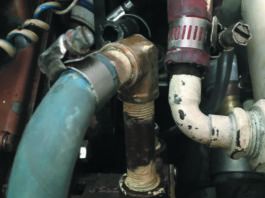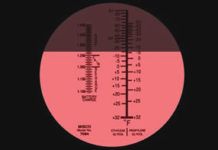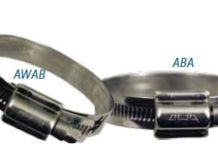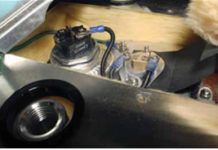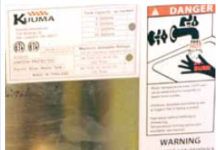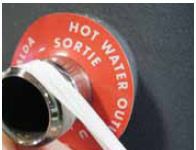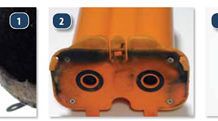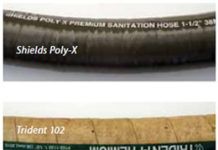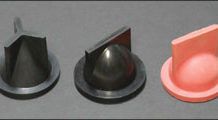Refractometer Takes Out All the Guesswork
What matters most, our testing confirms, is not so much which brand of pink stuff you choose, but how you use it. Even the best product, mixed with too much water left in the line, results in a blend with unknown and perhaps unsatisfactory performance. While this may not be critical in North Carolina, sailors in Wisconsin need to get it right.
AWAB, ABA Top Long-term Test
General-purpose, relatively inexpensive hose clamps are all over most boats, but there are some applications where using a higher quality, corrosion resistant clamp is critical-such as engine hoses and through-hulls. Most quality clamps are stamped stainless steel, but there are many grades of steel, and making an alloy stainless and corrosion resistant is complicated and costly. You start with iron, which rusts easily, and through multiple processes, you add proportions of elements such as nickel, manganese, molybdenum, and chromium. Different percentages of these elements will improve the desired strength, hardness, and flexibility, as well as corrosion resistance, of the steel.
Marine Water Heater Test
In the December issue PS evaluates four water heaters that are new or have been significantly updated since our last test in 1999. Water heaters are one of those silent heroes that rank high on the list of comforts on a boat. The test field included the Kuuma 11842, an 11-gallon tank; the stainless-steel Quick Nautique BX2012; Raritans 1706; and the 30-liter Compact from Sigmar Marine. Testers considered each heaters efficiency (using AC and engine-driven power), power consumption, construction quality, and ability to keep hot water hot.
Mix of Water, Amps, and Heat Calls for Caution
It is surprising to see equipment with no moving parts carry such an array of safety warnings. But any time water and higher-voltage AC electricity are mixed, there are details worth thinking about. The risk of shock can be lessened through a firm commitment to three-conductor wiring that follows the American Boat and Yacht Councils guidelines. This includes maintaining the continuity of the green grounding that links the boiler and metal housing to the boats ground. Strict adherence to high-quality crimp connectors, appropriate wire gauge, and care in keeping the neutral and hot wires consistent with the vessels and docks power supply are paramount.
Installing Water Heaters
The physical installation of a water heater may seem pretty straightforward, but the devil is indeed in the details. It starts prior to purchase with a search for adequate space thats relatively near the engine and vertically as low as possible. Next is bonding in a well-reinforced surface to mount the water heater onto. The empty tanks are relatively light, but if you add 45 to 88 pounds of water, you can see why a sound support base is important in a rough seaway.
Construction Quality Draws Testers Attention
Our testers began the evaluation with a close inspection of how each unit was assembled and what materials were used in their manufacture. The test field included stainless-steel, aluminum, and mild-steel boilers. When it comes to water tanks in sailboats, stainless-steel is favored over the other two metals, so we naturally asked ourselves why the water tanks in water heaters would be any different? To answer the question, we embarked on a series of bench tests and a long-term corrosion test to see how stainless steel, aluminum, and mild steel water heater tanks handle use in a salt-laden bilge-like environment.
The Fight Against Head Odors Continues
A few years ago, we launched a series of holding tank odor tests, including evaluations of holding-tank vent filters and sanitation hoses. After 30 months of testing, weve reached some solid conclusions on the hoses and vent filters. The sanitation hoses we tested were Trident Marines 101/102 EPDM hose; SeaLands OdorSafe Plus, a PVC and acrylonitrile butadiene rubber hose; Raritan Engineerings butyl rubber Sani/Flex Odor Shield; and Shields Marines Poly-X polyurethane sanitation hose. The four holding-tank vent filters we tested were our homemade system, Dometic SeaLand SaniGard, Big Oranges 5/8-inch filter, and the Vetus No-Smell NSF16.
The Results of our Mini Test Tank Autopsies
When we wrapped up the testing of the miniature holding tanks after 30 months, we were tempted to just pitch the whole lot in the dumpster after draining their contents, but we thought taking the faux holding tanks apart and examining the components up close might yield some interesting findings. (The things we do in the name of product testing-yuck!) Heres a breakdown of testers observations.
Joker Valves for Marine Heads
We tested nitrile and neoprene valves from marine toilet makers Groco, Jabsco, and Raritan. The Raritan and Groco are straight duckbill valves, while the Jabsco is a tricuspid valve that opens slightly wider. Bench tests and real-world testing aboard a cruising catamarn helped determine the valves chemical resistance and durability. Each valve was exposed to cleaners, oils, and other liquids that marine toilets are commonly exposed to, including urine and antifreeze.
Mailport: June 2013
How thick is too thick for the buildup of old layers of bottom paint? This question arises because I have just finished painting the bottom of my boat. Even though I diligently sought out potential flaking spots with my knife, while rolling on the paint (Pettit Ultima Eco), I would frequently get a mess caused by the paint flaking off. I have only owned this boat for three years, so I really do not know how many layers there are.



































